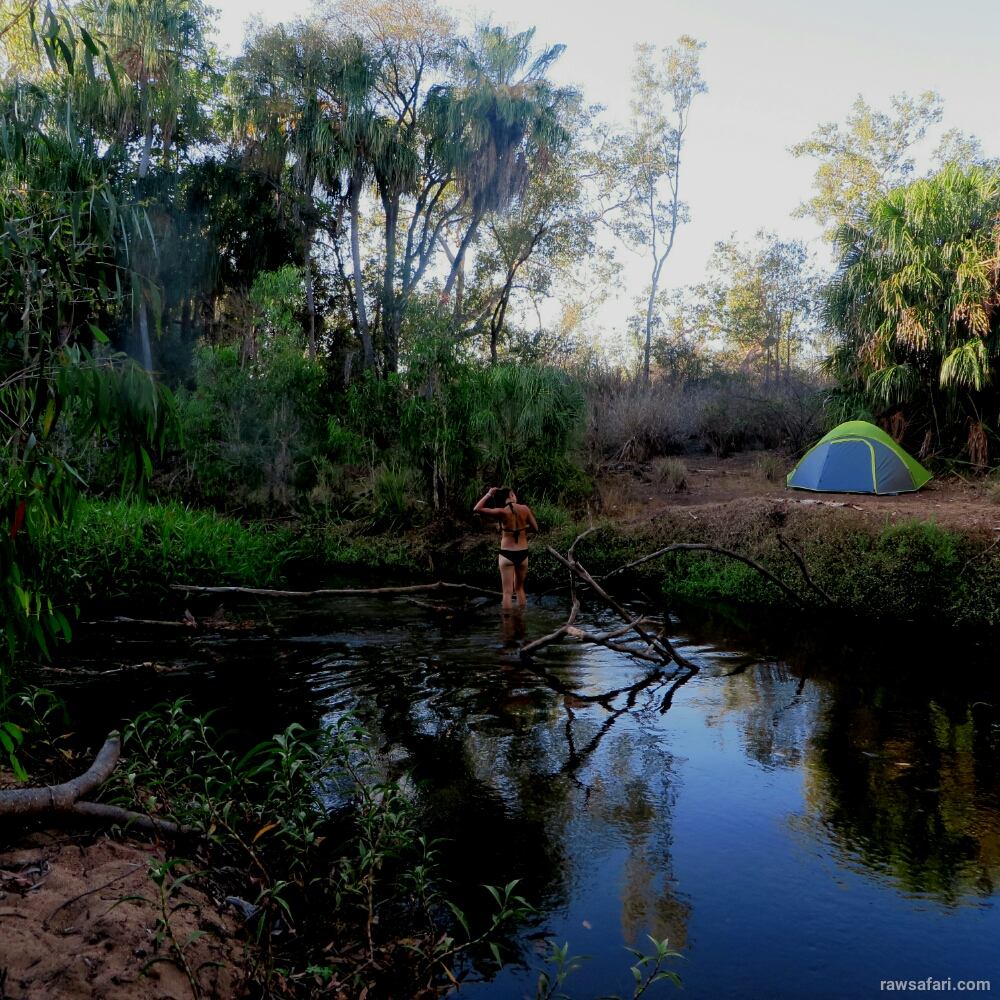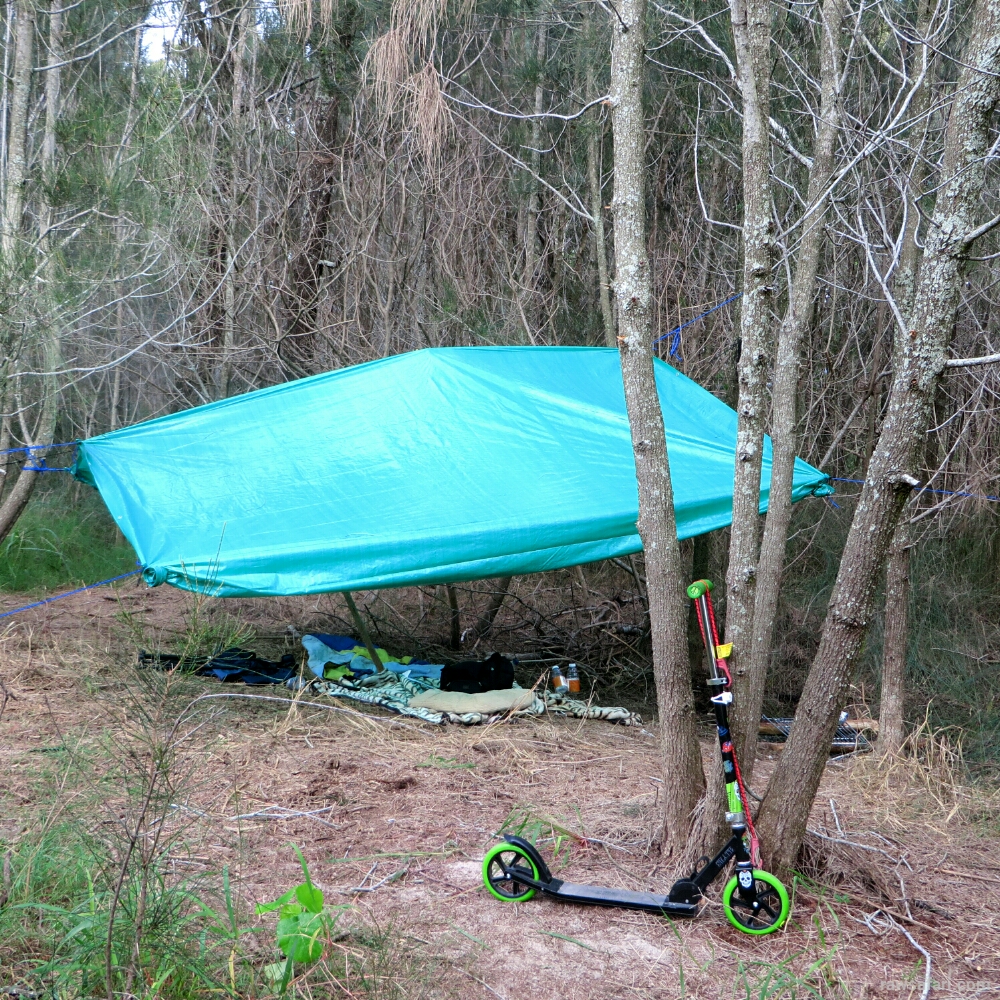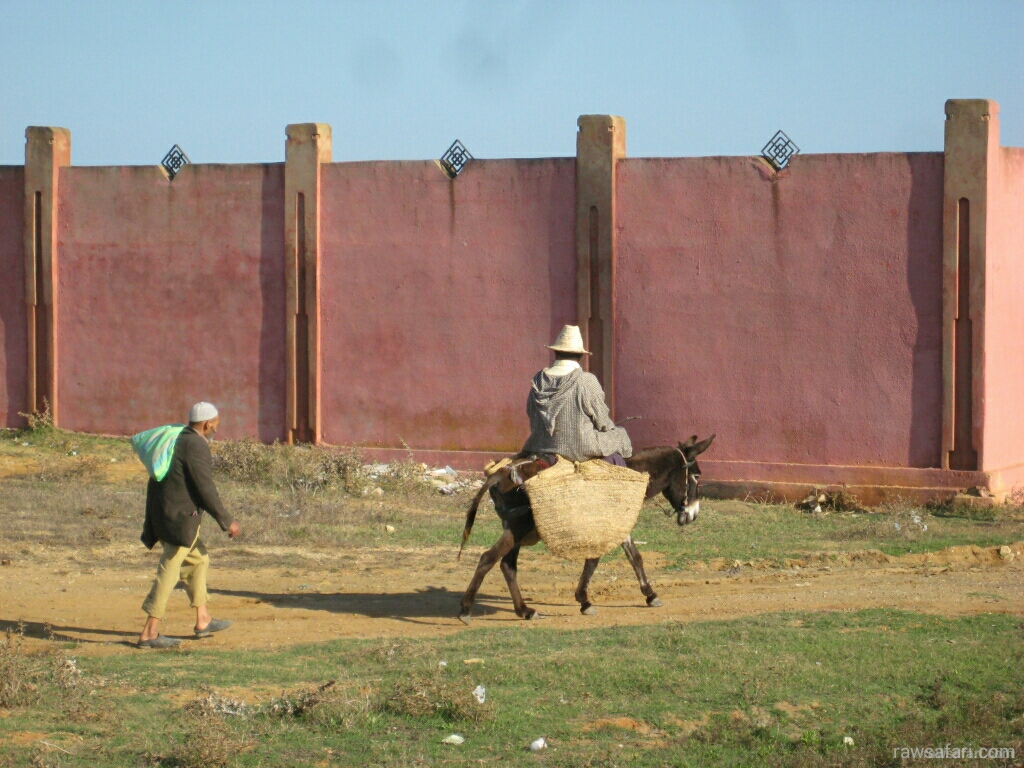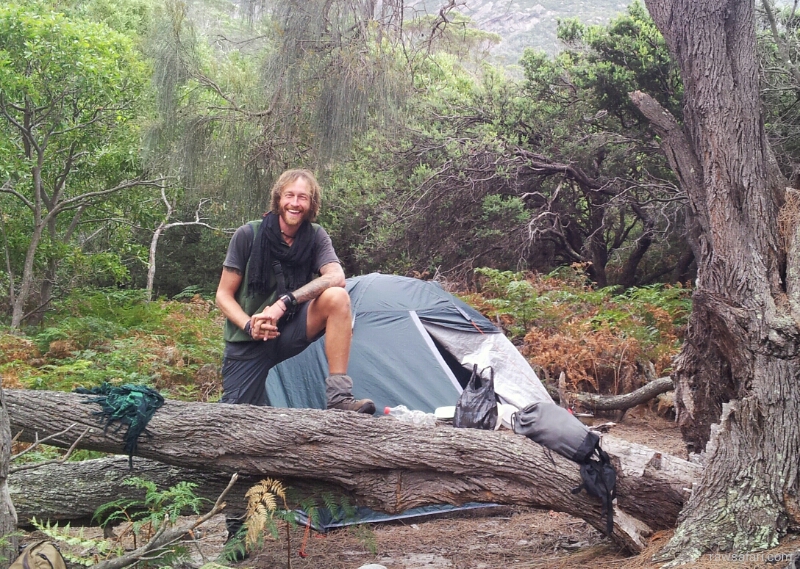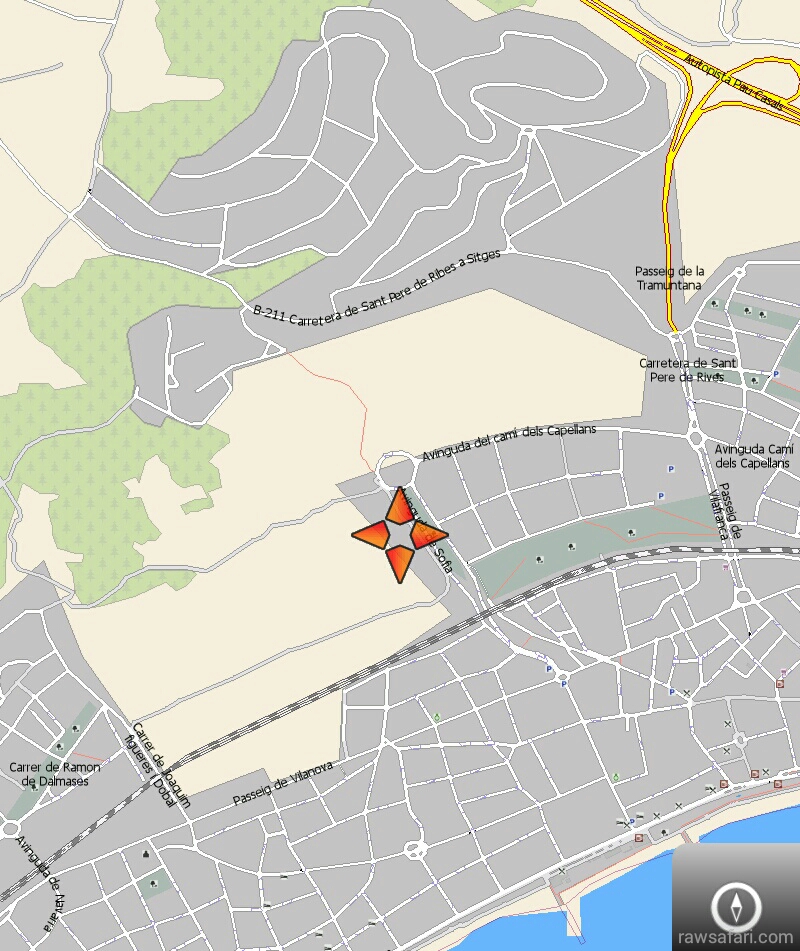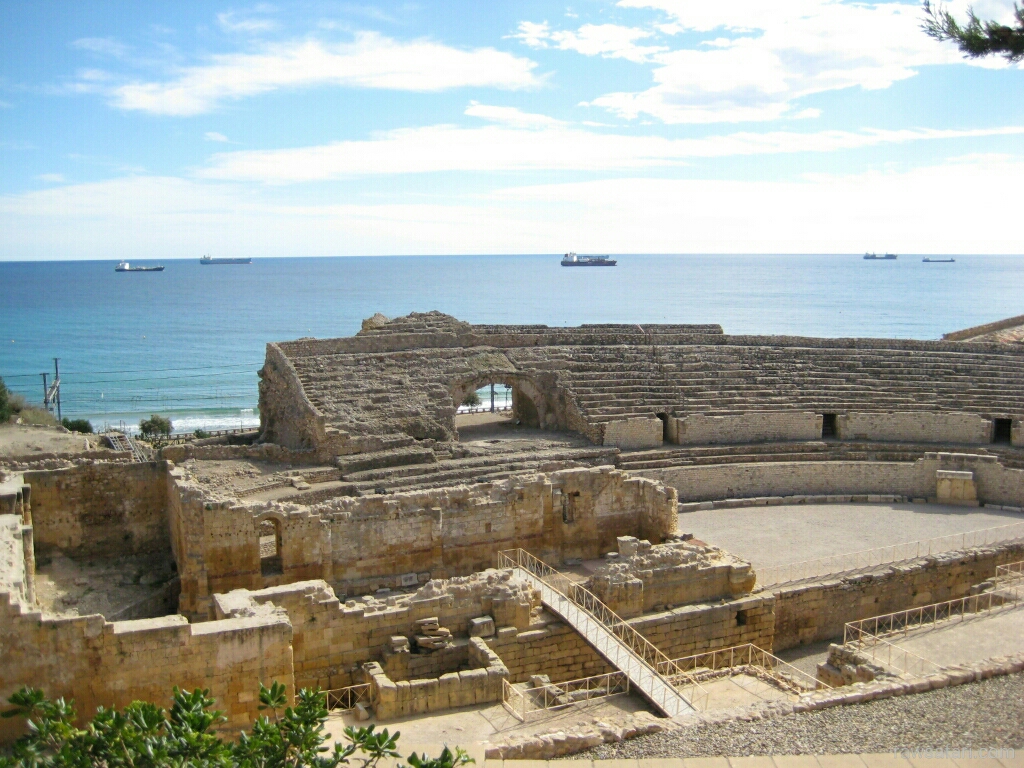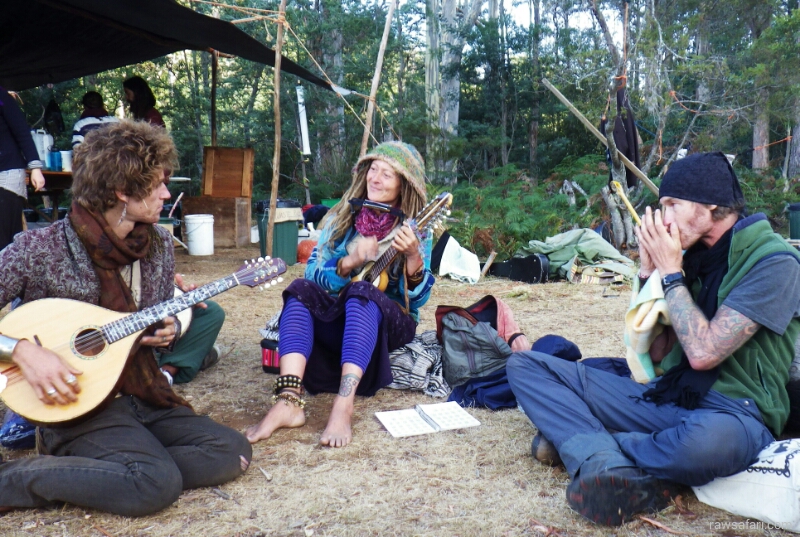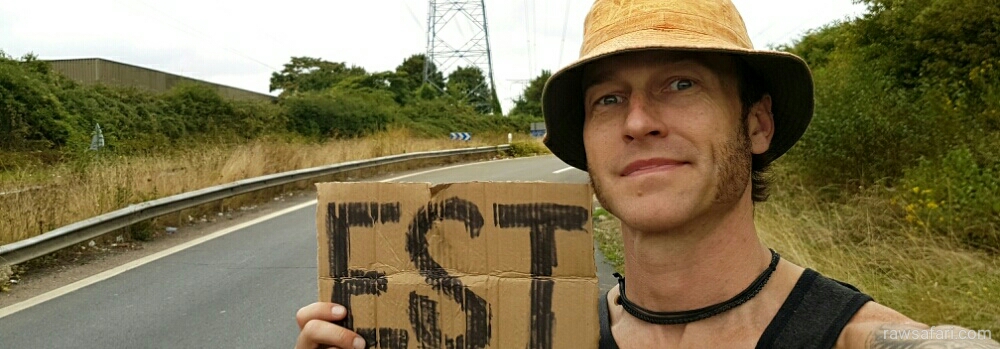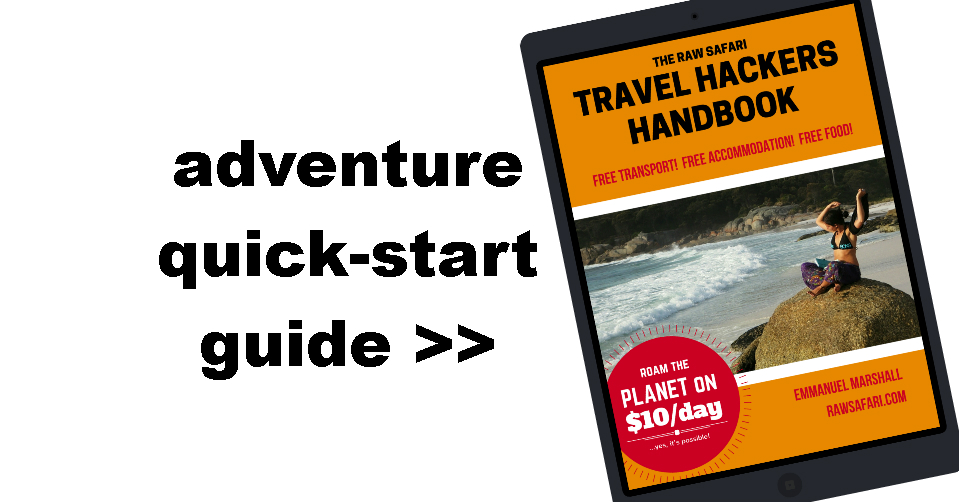Never Pay for Accommodation Again: Discover Urban Camping!
Being a Boy Scout guaranteed my nerd status as a kid, but I did learn some useful stuff about camping. Since then I’ve camped in all sorts of places: on beaches; riverbanks; sand dunes; cemeteries; vacant lots; railway yards; roadsides and parks.
Most people think of camping as something you do in forests, or in “camping grounds”, where you pay for a space to pitch your tent, but you can camp anywhere!
(Top pic: sometimes all you need to do to find an amazing camp site is follow a dirt road. This one is just outside Ayr, in Australia.)
Why Would I Want to Camp Out?
The main reason for camping when you travel, is saving money. In many parts of the world cheap hotels are widely available, but in places like Europe, the U.S.A. and Australia, hotels and even backpacker hostels are relatively expensive.
For me, every time I fork out money for a hostel bed, I’m thinking of the places I could go, the exotic food I could eat, and the exciting things I could do with that money instead. A bed is a bed is a bed. Some are fancier, some are cleaner, but in the end, you sleep in them, and sleep isn’t value for money in terms of travel experience.
(Below: Me and my mate Craig camped in a park, on the Gold Coast for four weeks. We avoided any hassles by using simple camouflage tecniques.)
The second reason I camp out is aesthetic. I love the outdoors, and there is a feeling I get when I’m curled up by my campfire, with a sky full of stars above me, that no hotel can provide.
Finally, camping makes you independent. I hitchhike everywhere, and I rarely know exactly where I will be at the end of the day. It’s exciting, but it means sometimes, at the end of the day, I end up in the middle of nowhere. Being prepared to camp comfortably and safely means I am never anxious about where a days travel will take me. As long as I can find a spot to pitch my tent, I will be warm and dry.
(Below: a bed is a bed. Because I don’t waste my money on hostels, I can spend it on stuff I really want to do… like seeing the amazing sculptures in the Louvre Museum.)
Camping Basics
Happy camping is partly about having the right equipment, but I’m not going to talk about that here. If you would like to find out about the camping gear I use, check out my Pack Your Bag page.
This article is all about how to do it.
If you have never camped before, don’t worry, camping isn’t rocket science.
Basically, camping is about striking a compromise between comfort and adventure. The more gear you have, the more comfortable you will be, but you will also need more time, energy and money to move around, and you will need a lot of space to pitch camp.
When I owned a 4×4 I used to load it up with tons of stuff for a weekend away. Now I like to travel light because it makes me free to camp anywhere I like.
To be happy and comfortable people need three things:
1. water
2. shelter
3. food
Camping next to water is great. You can have a swim and freshen up. Unfortunately, you usually can’t drink from natural bodies of water, unless you boil or purify it first. Dirty water can be deadly. Salt water is also dangerous to drink.
Having a supply of fresh drinking water is essential to safe camping. When you travel light, you don’t want to haul around a lot of water, so just keep a 2 litre bottle with you.
There are millions of different temporary shelters available from camping stores. Choosing the right one is about weight. You don’t want to be carrying around a three man tent every day.
When you pitch your shelter, choose flat, dry, ground, clear of sharp objects.
Push the pegs firmly into the ground and tie knots carefully. Keep all the ropes tight. You don’t want your home blowing away in the middle of the night if it gets windy. If your shelter feels floppy, it won’t survive bad weather. I’ve seen so many inexperienced campers wake up wet and cold because they didn’t want to spend 5 minutes pitching their tent properly.
When you choose food, get stuff that is relatively light, and doesn’t need refrigeration. Choose stuff that requires minimal preparation, is cheap, and nutritious.
You don’t even need to buy food if you’re into dumpster diving! Check out my Free Food guide here…
OK. That’s the basics.
– Keep it simple and light.
– Carry water.
– Pitch your shelter carefully.
If you follow those basic guidelines, you will have a hassle-free camping experience.
(Above: camping in Morocco was often challenging, but also great fun. This is Asilah, where I camped on a hillside outside the town.)
(Below: the tent in this picture is a $60 el-cheapo I got when I was in Tasmania. I made a few easy mod’s, like removing the metal and plastic parts, and upgrading the stakes, and got the weight of the tent down from 3.2 to 2.6 kg. Thanks for the pic, Jo.)
How Does Urban Camping Work?
Urban camping (a.k.a. stealth camping; a.k.a boondocking) is living an outdoor lifestyle in an urban setting. It’s about being free!
Urban camping is a specialised skill set. Most of the camping basics still apply, but the additional factor is visibility. When camping in an urban setting, the goal is to disappear.
A visible urban camp site will attract unwanted attention and make you vulnerable to harassment. If you are unseen, you will avoid problems with people in authority, such as police and rangers, and be secure from theft and vandalism. If nobody knows you’re there, no-one will give you any hassles, and you can enjoy your camp site in peace and quiet.
To blend in and disappear in an urban setting, you need to consider two things: location and camouflage.
Choosing a Campsite
Finding the right spot is the most important aspect of successful urban camping.
Choosing a camp site is all about observation.
A good urban camp site must have 3 important features:
1. it must be relatively close to the attractions of the town and sources of food and water
2. it should be hidden and not too close to footpaths or houses
3. it must be dry, and not susceptible to flooding in the case of sudden rain
When looking for a camp site, in an unfamiliar urban area, the first thing to do is consult a map.
If you have a GPS mapping app, like “Map Factor“, you can quickly and easily find out exactly where you are. If you are doing things old school, obtain a tourist map of the town from an information centre or hotel.
Once you know where you are, look for areas on the map that offer the best opportunities for camping. Identify features such as green zones, freeways, water courses, and vacant land.
Often, vacant land suitable for camping can be found on the edge of bodies of water: beaches; rivers; creeks; and lakes. It’s always nice to be near water when you camp, so you can freshen up in hot weather. (Note: Do not camp in dry creek beds. One hour of heavy rain, and you could find yourself in deep water.)
Large roadways such as motorways and train lines often have areas of waste ground or green zones beside them where you can camp.
Suburban sports fields often have lightly wooded ground on their margins suitable for camping.
Parks and reserves are often camp-able. Look for wooded or overgrown areas, off the footpaths, and away from street lighting. For an overnight camp, even a small suburban park is often OK if you pick the right spot, amongst shrubs or trees.
(Above: this screenshot from MapFactor Navigator, shows the spot I camped in Sitges, Spain. You can see the train track, the vacant land and the forested region. These are all clues to finding a good urban camp site. Once I had identified those features on the map, I was pretty confident of finding a good camp site. We ended up sleeping for four nights in an overgrown orchard. You can also see the proximity of this spot to the beach! It was barely ten minutes walk.)
Look for areas that are not lit up at night. Find places that are lightly overgrown, with long grass, or bushes to screen your camp site from passers-by.
Improvise and observe. Study your surroundings and investigate any areas that look dark and quiet. Some camp sites are OK for one night, others are good for a week. It all depends on the circumstances.
When you choose a camp site, look for tell-tale signs of other people using the area, like well worn paths and garbage. Especially in regions where poverty is an issue, attractive camp sites may also be favorite places for crack heads to hang out, so look for signs of habitation like mattresses and empty bottles before you settle. Moving your camp five meters might make the difference between invisibility, and having some drunk tripping over you in the middle of the night.
When you are in an unfamiliar area, it is a good idea to scout for potential camp sites before dark, when it is easier to find your way around. Identify one or more locations and mark them on your map. If your chosen site is deep in undergrowth, leave an unobtrusive marker to help you find the spot again later, such as a twig stuck in the ground, or a stack of stones beside the path. After nightfall, when you are less likely to be observed, you can easily return to the spot.
(Below: Tarragona, in Southern Spain is a bustling tourist city, but I found a comfortable camping spot less than ten minutes walk from the centre.)
Camouflage
Being invisible is the key to successful urban camping. If you cannot be seen you will avoid any hassles.
The more gear you have, the harder it will be to hide it, so the first principle is; less is more. Travel light and keep your camp site minimal.
The human eye is instinctively drawn to regular shapes, straight lines, and bright colours. Camouflage depends on avoiding these visual tell-tales.
Use natural elements like bushes, trees, long grass etc to screen your camp site. When leaving your camp site for the day, hide your gear under grass or tree branches. If you have a quick setup shelter like a tarp, strike your camp every morning, and conceal your gear completely.
Use organic colored, or black gear and clothing. The best colours are dark green, brown, black and charcoal grey. Avoid light colours or reflective materials that will show up at night.
Use a red coloured flashlight, which is harder to spot from a distance.
A camp fire will draw attention, so only light one if your camp site is really well hidden.
Try to avoid being seen entering, or leaving your camp.
Check the appearance of your camp from an outside point of view, to make sure it is not drawing attention.
Avoid camping on ridges where your shelter will stand out on the horizon.
(Below: camping on the beach with Shannon, right next to the surf club, in Fairy Meadow, Australia.)
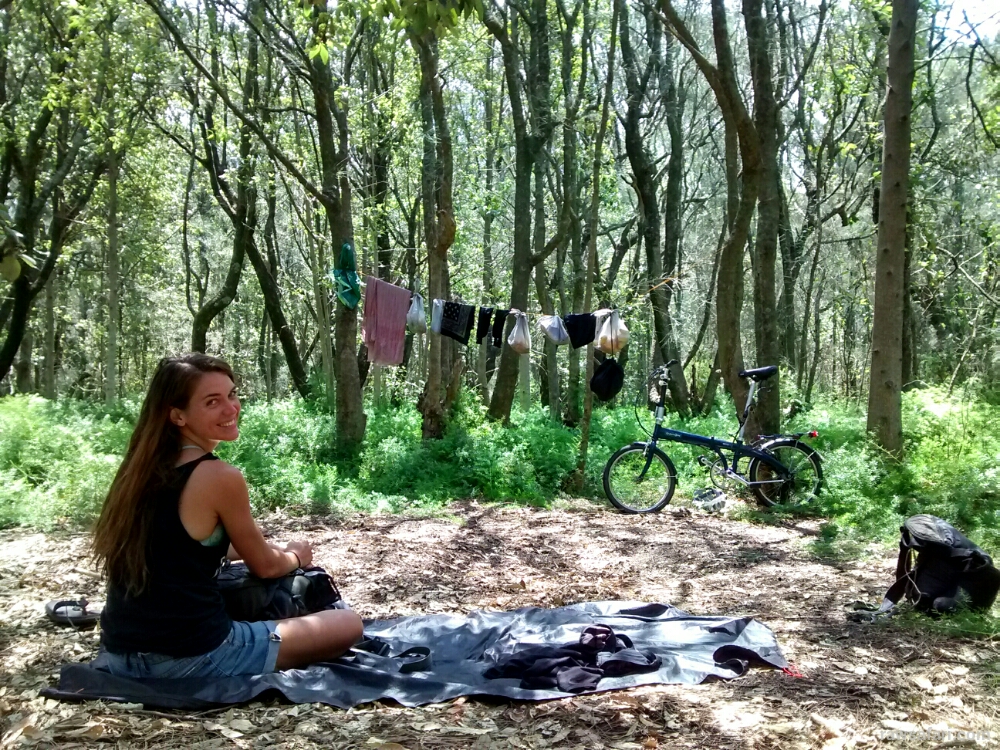
Pitching Camp
Whether you use a simple bivvy, a compact tent, or tarp, you will want to find the flattest ground available to set up on. A hammock avoids this issue, but keep it close to the ground.
Check carefully with gloved hands for any sharp objects such as broken glass, sticks, brambles etc, that may damage your shelter or bedding.
Avoid camping in ditches, causeways or swampy areas that may flood in case of rain.
Never camp in culverts or drains, however tempting they may be from the point of view of concealment. Many countries have dyke systems to control surface water flows, and an opened gate can mean a flash flood.
Do not camp in tidal zones such as beaches and estuaries. Tides can move quickly. Beaches often have excellent camping opportunities above the high tide line. To be sure you are in a safe area, look for consistent plant growth, and observe tidal erosion patterns on the beach.
You’re Ready for Adventure!
So what is it really like, travelling the world and living in a tent? To find out, check out some of my camping stories.
With the right gear and a bit of simple know-how, you can save yourself a lot of money. What do you do with all that extra money? Travel more, of course!
There is detailed information about my tent and all the equipment I use on the Pack Your Bag page.
If you’ve got questions, or you have some handy urban camping techniques of your own you’d like to tell me about, please comment below, or email me.
Happy trails!
(Below: when you live in the outdoors for a while, you discover a whole tribe of other people who live the same way. Whenever I go to events like Rainbow Gathering I meet lots of my gypsy brothers and sisters. When we get together and create a little community, it is always an exciting and creative experience. The photo below is from Rainbow Gathering Tasmania, in 2014.)
>> Questions? Check out the Q and A page, or email me.
>> Like Raw Safari on Facebook.
Hi! Manny here, the guy who makes this blog.
Want to start an adventure of your own?
Download your FREE copy of my e-book: The Raw Safari Travel Hackers Handbook and learn how to see the world on $10 a day!
Everything I’ve ever learned about low-budget adventure is in this book. Get it now, for free: click here!
